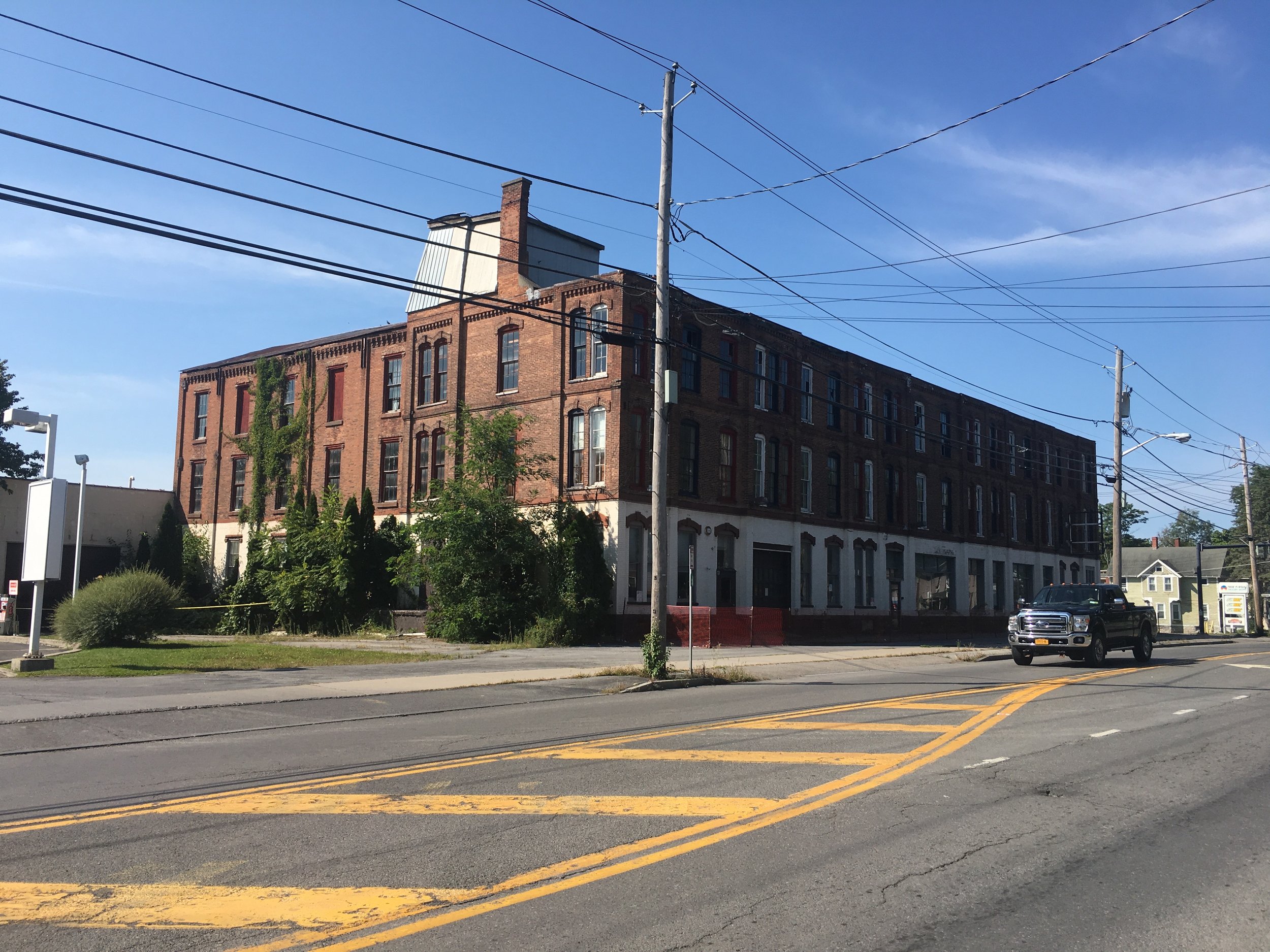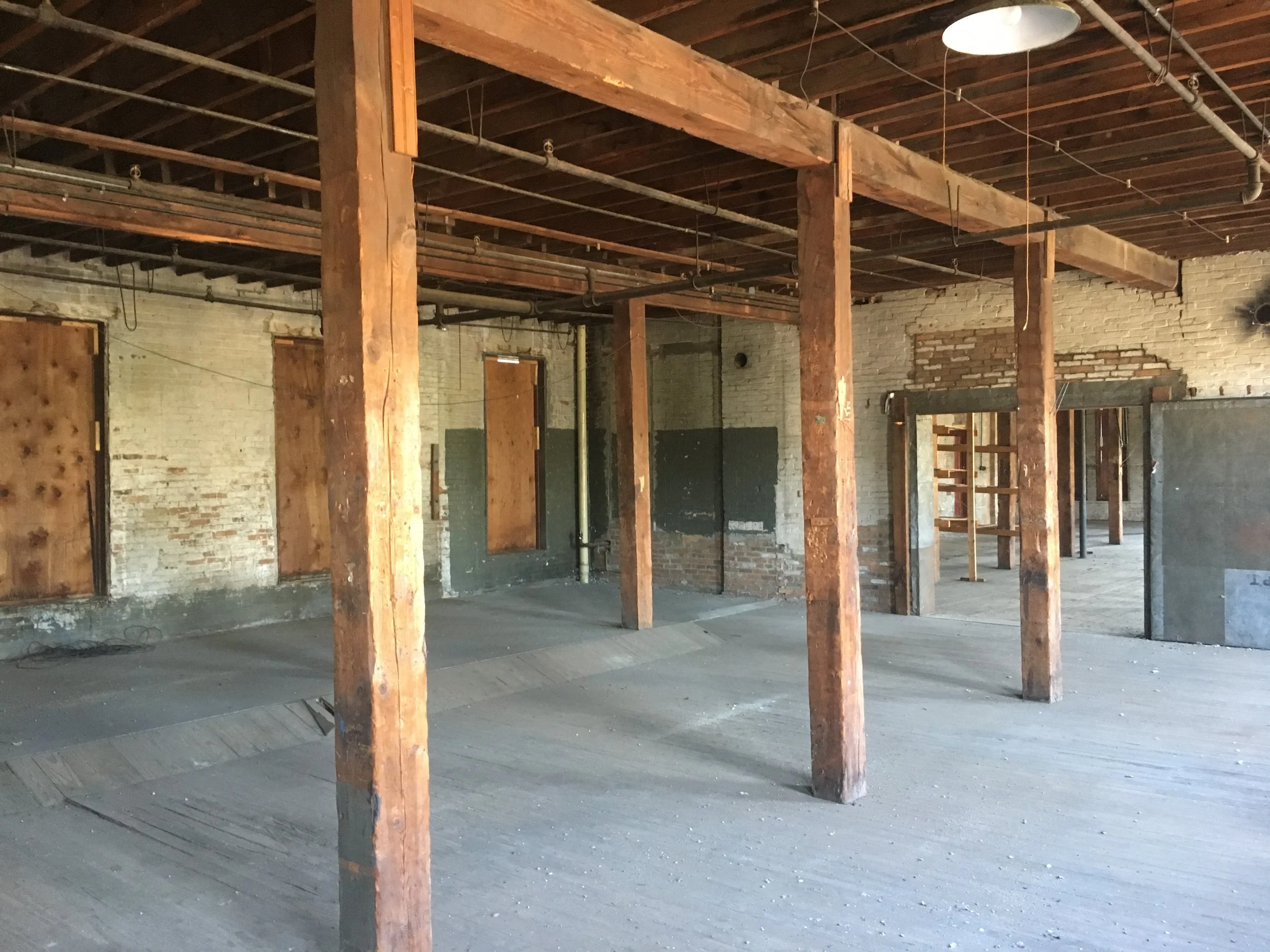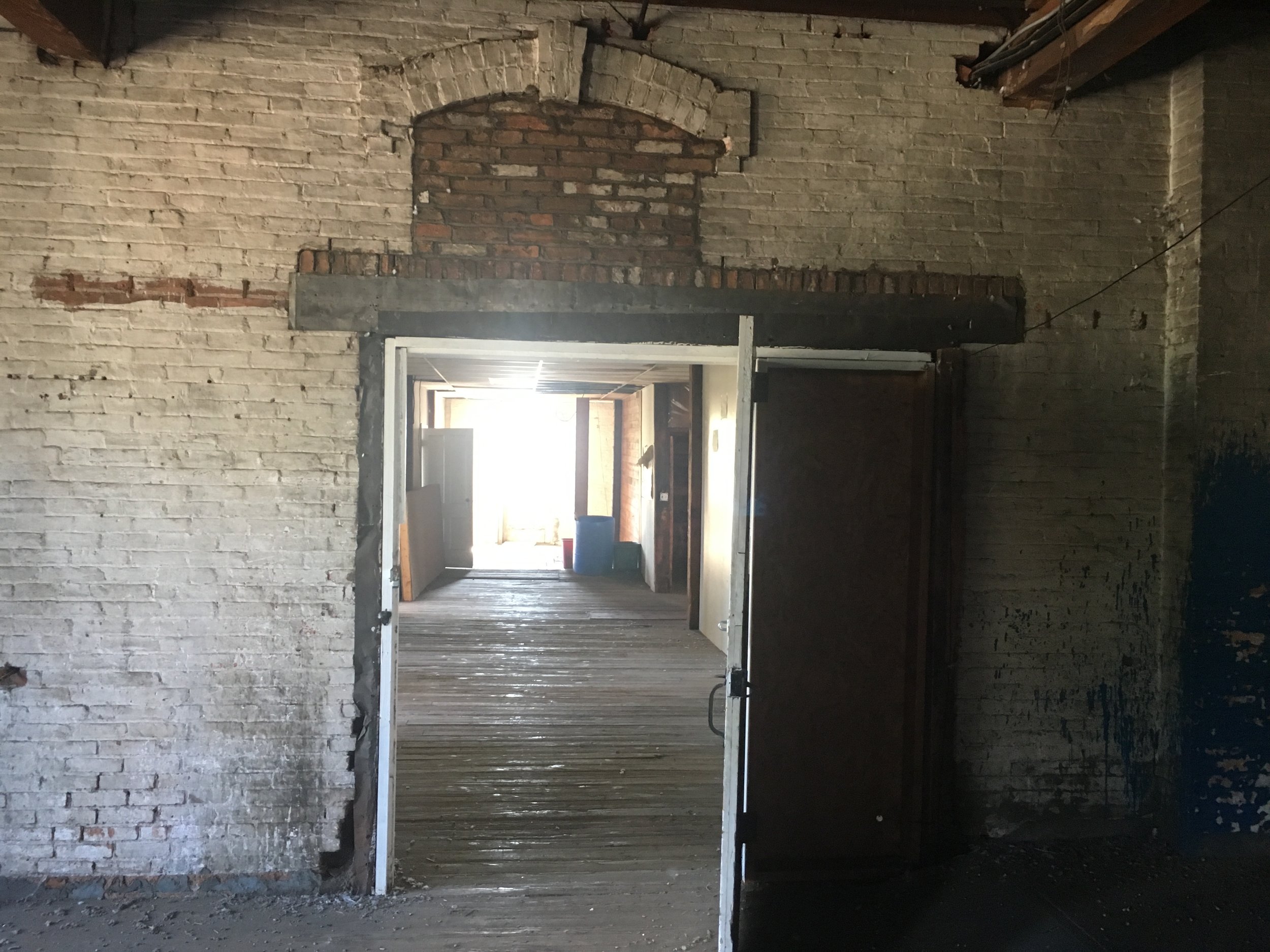Excellence Award Spotlight: Huntington Apartments
Aerial view of the Huntington Apartments building.
The transformation of the historic Huntington Building — originally the National Yeast Company — into Huntington Apartments is a powerful example of how preservation, social impact, and sustainability can converge in one remarkable project. The League is proud to recognize this effort with a 2025 Excellence in Historic Preservation Award.
Located at 201 Fall Street in the Village of Seneca Falls, this development is a testament to innovative adaptive reuse and community-driven revitalization. Formerly deteriorating and underutilized, the Huntington Building now offers 53 thoughtfully designed affordable apartments, including 27 permanent supportive housing units for homeless veterans. In partnership with Eagle Star Housing through the Empire State Supportive Housing Initiative (ESSHI), the project addresses both veteran homelessness and affordable housing needs. These units also honor the community's values, complementing Seneca Falls' Purple Heart Town designation and its proximity to the Purple Heart Trail and Veterans Memorial Bridge. On-site services and rental subsidies offer long-term stability and dignity to residents who have faced significant personal challenges.
“We are deeply honored that the Preservation League has chosen to recognize Huntington Apartments,” said Megan Houppert, CEO of Home Leasing. “This remarkable transformation was made possible through the dedication of so many who helped preserve this landmark and believed in our vision. We proudly share this recognition with all who stood with us to save it from demolition and give it new life.”
The campaign to save the building began before Home Leasing stepped in as developer. When demolition and a gas station redevelopment were proposed, the Seneca Falls Historical Society mobilized to preserve the structure, working with the Landmark Society of Western New York to include the site on its 2018 "Five to Revive" list. This advocacy effort drew attention to the building's significance and need for reinvestment. Home Leasing responded with a bold vision: to create affordable and supportive housing while preserving the building’s historic character. With support from the Historical Society and the Town, the developer persuaded the seller to consider a community-focused solution, ultimately preserving this landmark for generations to come.
The rehabilitation of the Huntington building included reconstructing the previously lost fourth floor with a new mansard roof, which enabled additional apartments to be built.
The rehabilitation presented complex architectural and logistical challenges. The original 1870 structure had six historic additions built between 1871 and 1950, each with differing materials, elevations, and architectural details. This required a nuanced preservation approach tailored to each section. The building also lacked adequate space for the planned number of units. Under the leadership of HUNT Architecture, the team devised creative, historically sensitive design solutions. These included reconstructing the previously lost fourth floor with a mansard roof, adding square footage to a 1950s garage, and building a new addition for the lobby and leasing office. Careful masonry restoration, historically accurate window replacements, and coordination with the State Historic Preservation Office (SHPO) and the National Park Service ensured eligibility for state and federal Historic Tax Credits — an essential component of the project’s financing. Preservation Studios provided critical guidance through this rigorous approval process.
What further elevates this project is its commitment to sustainability. Huntington Apartments was developed to meet high-performance energy and green building standards, including NYSERDA’s Multifamily New Construction Program, EPA Energy Star Certified Homes V3.1, and Enterprise Green Communities 2020 criteria. Each unit includes Energy Star appliances and central air, and the entire building uses energy-efficient systems designed to minimize its carbon footprint. This fusion of preservation and environmental stewardship makes the project a model for climate-resilient affordable housing. Huntington Apartments also exemplifies a holistic approach to residential development.
More than just housing, the building includes amenities that foster community and resident well-being: a community room, playground, fitness center, bicycle storage, and on-site management with 24/7 emergency response. Dedicated office space for Eagle Star Housing ensures veterans can access support in a private, professional setting. Rent includes all utilities, easing financial strain for tenants and supporting housing stability. Importantly, this project also highlights the potential of reinvesting in smalltown Main Streets — once the economic and social cores of their communities. This project demonstrates how thoughtful collaboration can create lasting, transformative impact. From the tireless advocacy of local preservationists to the strategic partnerships among nonprofit service providers, architects, preservation experts, and public and private funders, Huntington Apartments shows what is possible when stakeholders unite around a common goal. It is a beacon of community renewal, social equity, and environmental integrity.
A group poses outside the Huntington during a public ribbon cutting event.
New York State Homes and Community Renewal Commissioner RuthAnne Visnauskas said, “Creating safe, affordable housing, while preserving New York’s rich history, is a cornerstone of Governor Kathy Hochul’s $25 billion, five-year housing plan to create and preserve 100,000 affordable units. New York has also led the nation in using State and Federal Historic Rehabilitation Tax Credits to improve landmark buildings like the Huntington, an iconic 19th century Seneca Falls former factory that was converted into 53 affordable apartments — 27 of them with supportive services for veterans. Thank you to the Preservation League of New York State for its commitment to saving New York’s historic past — in turn allowing more projects like Huntington to become a reality.”
Project team: Home Leasing (developer, owner, property manager), Home Leasing Construction (general contractor), HUNT Engineers, Architects & Surveyors (architect), BME Associates (civil engineer), Preservation Studios (historic preservation consultant), LaBella Associates (environmental consultant), Sustainable Comfort (energy and sustainability consultant), Eagle Star Housing (nonprofit service provider), Hudson Capital (syndicator), JPMorgan Chase (construction lender).
Funding: Huntington Apartments is supported by New York State Homes and Community Renewal’s (HCR) state and federal Low-Income Housing Tax Credit Programs that will generate more than $12.1 million in equity and $3.7 million in subsidy. The New York State Historic Preservation Office provided $7.1 million in federal and state historic tax credits. The Department of State’s (DOS) Downtown Revitalization Initiative provided $800,000 in support which is being administered by HCR on behalf of DOS. The New York State Energy Research and Development Authority (NYSERDA) provided more than $50,000 from NYSERDA’s High-Rise Multi-Family New Construction program. The Community Preservation Corporation, a nonprofit multifamily finance company, is providing a SONYMA-insured $475,000 permanent loan to support the project.











